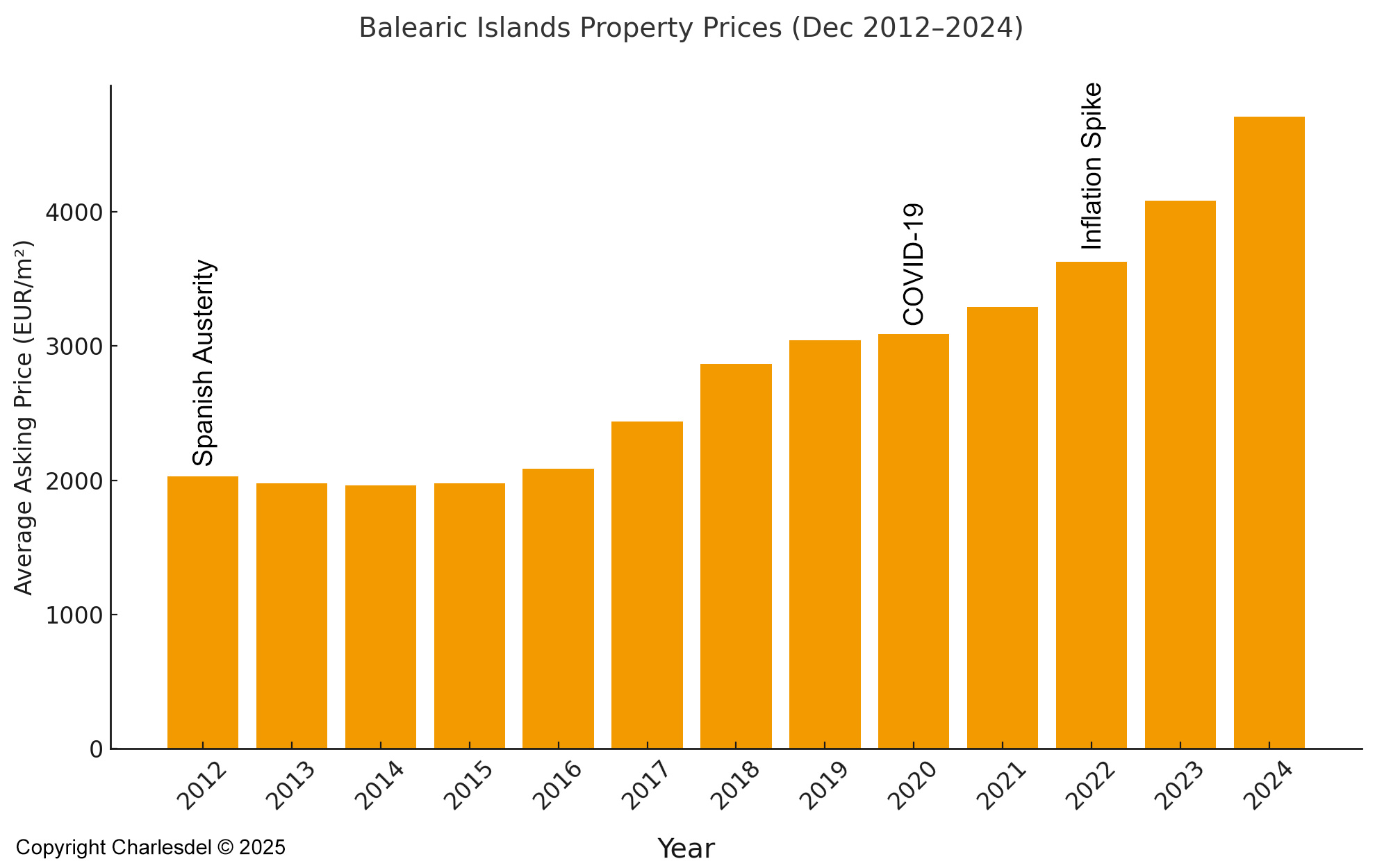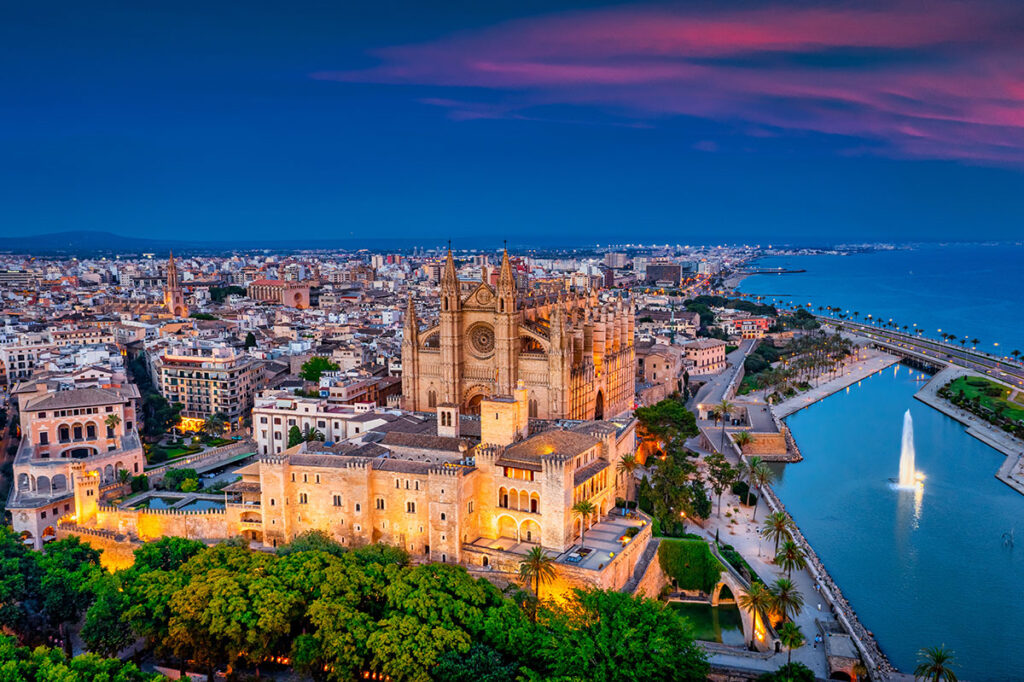A Market Built on Stability and Lifestyle Appeal
Mallorca continues to be a leading choice for international property investors in 2025 – not just for its long-term market performance, but for its enduring appeal as a lifestyle destination. Over the past 12 years, the island has demonstrated exceptional resilience. It has navigated a series of regional and European crises – including Spain’s austerity programme, the COVID-19 pandemic, and the inflationary spike following the war in Ukraine. Despite these challenges, prices remained stable or continued rising, underscoring the market’s long-term strength.
From December 2016 to December 2024, average asking prices in the Balearic Islands – driven primarily by Mallorca, which accounts for around three-quarters of all property transactions in the region – rose from €2,100 to €4,707 per square metre, based on regional data from Idealista.
This represents a total increase of 124% over eight years, reflecting a clear and sustained upward trend following the plateau that marked the post-austerity years between 2012 and 2016. Such growth is notable in the context of wider European real estate, where few markets have delivered this level of appreciation with comparable stability.

Cash Buyers and International Demand
One of the key reasons for this resilience is the profile of demand. Mallorca’s property market is driven by international buyers, particularly second-home investors and lifestyle-focused purchasers, many of whom buy without financing. This characteristic limits the island’s exposure to domestic credit conditions and interest rate cycles, making it less vulnerable to the volatility seen in more leveraged markets.
In particular, the villa market in Mallorca attracts lifestyle-focused buyers from across Europe and beyond. These are often second-home purchasers who value the island not only as an investment but as a base for leisure and long-term relocation. With strict planning laws and limited land availability, new supply is constrained – another reason why prices have held firm even during broader economic downturns.
Performance Through Global Shocks
From 2012 to 2024, Mallorca’s property market has navigated three notable international challenges, yet it remained remarkably resilient:
- Spanish Austerity (2012–2014): Prices in Mallorca plateaued rather than collapsed, unlike many mainland regions. The island’s strong tourism sector and limited overdevelopment helped soften the impact.
- COVID-19 Pandemic (2020–2021): While tourism was restricted and transaction volumes dipped temporarily, prices continued to rise. From December 2020 to December 2021, average prices in the Balearics increased from €3,091 to €3,291 per square metre.
- Post-Ukraine Inflation Spike (2022–2023): Despite rising interest rates and economic uncertainty across Europe, Mallorca’s market remained buoyant. Prices jumped by over 12% between December 2022 and December 2023 alone.
These figures highlight not just recovery, but impressive upward momentum, even as other markets stalled. Compared to the wider Spanish market, Mallorca demonstrated greater price stability and a more sustained recovery, particularly from 2016.
Record Tourism Underlines Continued Demand
Tourism plays a central role in supporting demand for lifestyle properties and villas for sale in Mallorca. In 2024, the Balearic Islands welcomed a record 18.7 million visitors, including 15.3 million foreign tourists, according to figures published by the Majorca Daily Bulletin. This was nearly 900,000 more than in 2023. For investors, these numbers reinforce the island’s dual appeal: strong rental returns during the high season and long-term capital growth driven by international desirability.
The sustained strength of the tourism sector not only supports short-term income potential but also underpins long-term demand for high-quality real estate, especially in coastal and sought-after areas.
A Safe, Long-Term Investment Destination
For international property investors, Mallorca offers a unique combination of strong price appreciation, robust and growing tourism, and an idyllic Mediterranean lifestyle. Its consistent performance through periods of regional and international uncertainty reinforces its appeal as a secure, long-term investment.



